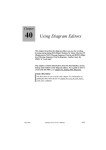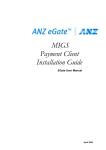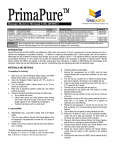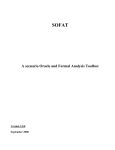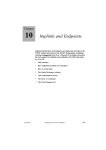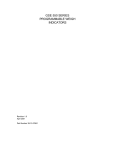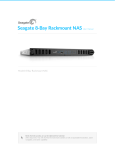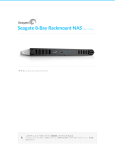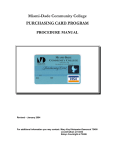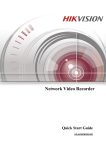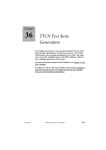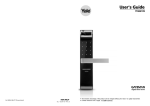Download Requirement Analysis
Transcript
Chapter 71 Requirements Analysis This chapter gives a thorough description of the different models in the requirements analysis activity as well as some guidelines on how to create these models. A recommendation on consistency rules that are relevant for the models in this activity is also included. The chapter requires that you are at least reasonable familiar with the concepts concerning object models as well as the concepts concerning MSC diagrams. July 2003 Telelogic Tau 4.5 User’s Manual ,um-st1 3697 Chapter 71 Requirements Analysis Requirements Analysis Overview The purpose of the requirements analysis is to establish an understanding of the application domain and to capture, formalize, analyze and validate the user requirements on the system to be built. For this purpose the system is viewed as a black-box and only the objects and concepts visible on the system boundary and outside the system are modeled. The input to this activity can of course be very different depending on the application, from an extensive requirements specification provided by a customer to some more or less vague ideas not documented on paper. In any case the result of the activity should be the same: An understanding of the problem domain that the system is to be operating within and an understanding of the role the system is to fulfill in this environment, i.e. the requirements on the system to be built. In many cases the requirements analysis can be divided into two activities: • • A problem analysis A system requirements analysis The problem analysis concentrates on understanding the problem domain the system is going to operate in, without any reference to the system itself. The system requirements analysis focuses directly on the functional requirements on the system, viewed as a black box. Data Dictionary Req. Use Cases System Operations External textual requirements Requirements Analysis Requirements Object Model Internal textual requirements Figure 627: Overview of the requirements analysis activity 3698 ,um-st1 Telelogic Tau 4.5 User’s Manual July 2003 Requirements Analysis Overview An overview of the requirements analysis activity is depicted in Figure 627. As can be seen a number of models are used: • Textual requirements model as described in “Textual Requirements” on page 3700. Some requirements are supplied as input to the activity, others may be produced within the activity. • Data dictionary, further described in “Data Dictionary” on page 3701. • Use case model, described by text, plain MSCs, or plain MSCs in combination with HMSCs. The use case model shows the system and the actors interacting with the system. It is described in “Use Cases” on page 3703. • Requirements object model using object model notation. This model includes both a problem domain model and context diagrams showing the system and the external actors that interact with the system. The requirements object model is described in “Requirements Object Model” on page 3711. • System operations model, see “System Operations” on page 3716. The requirements analysis is a highly iterative process where the different tasks creating the different models are iterated over and over again but the following outline can give some guideline on how to structure the work: 1. Study any textual requirements that are provided as input and other sources of information that are available, e.g. read text books about the problem domain and talk to potential users of the system. This may also include rewriting (or creating from scratch) the textual requirements to make them more complete or structured. 2. While performing 1 above create a first version of the data dictionary, including lists of actors, use cases and important problem domain concepts. 3. Create a first version of the requirements object model: July 2003 – Use context diagrams to give an overview of the actors and the system. – Use an information model to describe the problem domain. Telelogic Tau 4.5 User’s Manual ,um-st1 3699 Chapter 71 Requirements Analysis 4. Create a first version of the use case model. – Review and optimize the list of use cases found so far. – Describe the details of the most important use cases as text and/or MSCs. If the use cases are complex, HMSCs can be used in combination with plain MSCs. Start with the normal cases and leave the exceptional cases for the moment. 5. Refine and extend the requirements object model and use case model until the use cases and their exceptions cover a sufficient part of the requirements. Add state charts to the requirements object model if the behavior of an object needs to be considered. When needed use system operations to define the details of the interactions between the actors and the system. Textual Requirements Conventional textual requirements are in most development projects an important input and result of the requirements analysis. In SOMT, the textual requirements model is simply one or more text documents. It is however important to include them within the scope of SOMT to get a possibility to create implinks from them to the other models in SOMT, and thus make it possible to trace the implementation of the requirements. The source of the requirements may in some cases be the customers in which case the textual requirements form one of the inputs to the requirements analysis. In other cases the textual requirements are created by the development team as part of the requirements analysis. Non-functional requirements are an example of a type of requirements that are important to capture, but may be difficult to formulate using the other models in the requirements analysis. The non-functional requirements may express properties about for example: • Performance issues like response time or number of transactions per second. • Reliability like the mean time between failure. This type of requirements are most easily expressed in natural language and entered into the textual requirements model. 3700 ,um-st1 Telelogic Tau 4.5 User’s Manual July 2003 Data Dictionary It is important to not only write down the requirements but also to analyze them. One aspect of this analysis is to mark all important concepts in the requirements that can be useful later when identifying objects and use cases. Data Dictionary The data dictionary is a textual list of all concepts that are defined during the analysis. The purpose of the data dictionary is to define a vocabulary that is common to all the members of the development team and to the customers and users of the system. It is important to notice that the data dictionary is not a separate list of entities that is unrelated to the other models in the requirements analysis. Rather it can be seen as a different viewpoint on the same set of basic concepts that are used and defined in the use cases and in the requirements object model. For example all domain objects should be added to the data dictionary as soon as they are defined in the object model. For each entity defined in the data dictionary at least the name of the entity and a brief explanation of the entity must be supplied. Note that although the data dictionary is created in the requirements analysis it can be used during the entire development process and be updated when new concepts are found also in the other activities. The following Example 602 shows a part of a data dictionary for the access control system. Example 602: A part of a data dictionary description –––––––––––––– NOUNS Access control system - A system to control the access rights to an office. Unauthorized persons should not be able to enter without permission. Card - Each employee working in the office has a card and a corresponding personal code. Card reader - The hardware into which the employee enters the card. The cardreader reads the cardId. Code - Each employee has a four digit personal code connected to the card. To enter the office the employee must type the code on the keypad. July 2003 Telelogic Tau 4.5 User’s Manual ,um-st1 3701 Chapter 71 Requirements Analysis Display - The hardware unit by which the system tells the employee what to do. Door - Employees enter and exit the office by opening a door. The door is always kept locked and unlocks only when the employee enters the office with a valid card and code or when the employee is leaving the office by pressing the exit button. Each door provides a cardreader, keypad and display on the outside of the office and an exit button on the inside. Keypad - The hardware unit used to type personal codes. The keypad has keys for the digits 0-9. Employee - The holder of a position in the office. Every employee has a registered card with a personal code to get access to the office. RELATION PHRASES Card with code - Each employee in the office has a card with a a personal code. Code consists of four digits - The personal code that every employee has got, consists of four digits. Door provides local panel - Each door has a localpanel on the outside of the office. This localpanel is made up of a card reader, a display and a keypad. Door provides exit button - Each door has an exit button on the inside of the office. Registerfile contains employee identifications, cardnumbers and codes - The registerfile contains the data relevant to the access control system. VERB PHRASES Connection is lost - The connection between a door and the central controller can sometimes fail. In case of broken connection nobody can enter the office. It is, however, possible to leave the office. Inform employee - The system gives the employee instructions by means of the display. 3702 ,um-st1 Telelogic Tau 4.5 User’s Manual July 2003 Use Cases Enter office - A use case which describes the interaction between an employee and the access control system when the employee wants to enter the office. Exit office - A use case which describes the interaction between an employee and the access control system when the employee wants to exit the office. Validate card - The central controller validates a card with respect to info in the registerfile. Validate code - The central controller validates the correctness of a code with respect to info in the registerfile. –––––––––––––––––––––––––––––––––––––––––––––––––––––––––– In Example 602, the items in data dictionary are categorized into nouns, relation phrases and verb phrases. By categorizing the items, it may be easier to find the objects, attributes, operators, actors and use cases and also the relations between these entities in each model. Use Cases The most important problem to tackle when designing a new system is not to verify the correctness of the system or to get an optimized implementation. None of this matters if the system does not solve the right problem. User-centered requirements analysis using use cases is an approach to capture requirements from the user’s point of view. The intention is of course that the users will be able to understand and validate the use cases, and thus confirm that they indeed define the right system to be built. Consider a system that controls the access to a building, allowing users to enter the building through doors that can be opened by entering a card and a code into a card reader. Some typical use cases for this system may be: • • “Register a new user” “Open door” An important term when discussing use cases is the notion of an “actor”. An actor is an outside entity that interacts with the system. An actor can be a human being, a hardware unit, a computer program or anything else that can communicate with the system. Usually there is also made a distinction between the individual users of a system and the actors. An actor is not supposed to be an individual user, but rather represents one of July 2003 Telelogic Tau 4.5 User’s Manual ,um-st1 3703 Chapter 71 Requirements Analysis the different “roles” individual users can play when interacting with the system. Each use case describes essentially the possible sequences of events that take place when one or more actors interact with the system in order to fulfill the purpose of the use case. Note that the use case does not define one specific sequence of events, but rather a set of possible sequences. A use case is thus simply a description, in one format or another, of a certain way to use the system. It has been found to be a very efficient way to capture a user’s view of the system and the concept of use cases is now used in a number of object-oriented methods. The version used in SOMT is mainly a combination of the original use cases as described in [18] and the OMT version [19]. A difference is that, as will be seen below, SOMT puts some more effort in the formalization of the use cases to be able to use them for verification purposes during the object design. In SOMT the use case model is in practise composed of three parts: • A list of actors • A list of use cases • The collection of use case descriptions The list of actors should describe all actors that have been identified, why they use the system (or which service they provide to the system) and what their responsibilities are. The list of use cases just gives a one-sentence description of each use case. The lists of actors and use cases can either be separate documents or be a part of the data dictionary. The lists are particularly useful in the beginning of the requirements analysis when trying to identify the most important use cases and actors. Two different formats are used to describe use cases in SOMT. One purely textual format and one format that uses MSC diagrams to define the use cases. Depending on the application (and the users) one or both of the notations can be used in a specific project. If the chosen approach is to describe the use cases by means of MSCs and they turn out to be very complex, it is possible to use a combination of plain MSCs and HMSCs to describe them. Most of the things that can be expressed with 3704 ,um-st1 Telelogic Tau 4.5 User’s Manual July 2003 Use Cases HMSCs can also be expressed by plain MSCs, so it is a matter of taste if you want to use HMSCs or not. HMSCs have certain advantages, especially if the system is complex: • They give a good overview of what is happening in the system and thereby facilitate understanding of the system behavior. • They make it easier to maintain the use case model. The choice of notation for use cases is a matter of personal taste and the application at hand. There are four different possibilities: • Use only textual use cases. • Use only MSC use cases. • Give a brief textual description of the use case. Then give a complete formal MSC definition of the use case. • Give a complete detailed textual description of the use case, covering all exceptions etc. Then use MSCs to exemplify some of the more important cases. Textual Use Cases The textual format consists essentially of natural language text structured into a number of fields and is easiest introduced with an example. Consider the Enter building use case for the access control system that controls the doors of a building. This use case is depicted in Example 603. Example 603: Textual description of the Enter building use case–––– Use case name: Enter building Actors: Regular user, Door Preconditions: ‘Enter card’ is displayed and doors are closed and locked Postconditions: Same as preconditions Description: A user enters a card into the cardreader. ‘Enter code’ is displayed on the display. The user enters his code (4 digits) using the keyboard. The door is unlocked and ‘Door unlocked. Please enter.’ is displayed. The user opens the door, enters the building and closes the door again. the door is locked again and ‘enter card’ is displayed. July 2003 Telelogic Tau 4.5 User’s Manual ,um-st1 3705 Chapter 71 Requirements Analysis Exceptions: - If the user enters the wrong code then ‘Wrong code’ is flashed for 3 seconds and then ‘enter card’ is displayed. - If the user does not open the door after it has been unlocked, then the door is locked again after 30 seconds and ‘Enter card’ is displayed –––––––––––––––––––––––––––––––––––––––––––––––––––––––––– As can be seen in the example, a use case has the following fields: • Name: The name of the use case. • Actors: A list of the actors involved in the use case. • Preconditions: A list of properties that must be true for this use case to take place. • Postconditions: A list of properties that are true when the use case is finished. • Description: A textual description of the “normal” sequence of events that describe the interaction between the actors and the system. • Exceptions: A list of exceptional interactions that complement the “normal” flow of events described in the Description field. If an exception leads to different postcondition properties compared to the “normal” sequence, this should be noted. As with the textual requirements, it is important to analyze the textual use cases and clearly mark all important concepts in order to be able to use them when identifying classes and when performing consistency checks between the different models. Message Sequence Charts The second notation for use cases used in SOMT is Message Sequence Charts (MSCs). An MSC is a diagram that shows a number of communicating entities (called instances) and the messages that they exchange. Two MSCs that correspond to the “Enter building” use case are shown in Figure 628 and Figure 629. Figure 628 describes the normal case and Figure 629 describes one of the exceptions. A comment to this use case: There is always a choice of how much to show in a use case. In this particular example there is of course a choice whether to show the interaction between the User and the Door that 3706 ,um-st1 Telelogic Tau 4.5 User’s Manual July 2003 Use Cases does not involve the system. There is of course such an interaction where the user opens and closes the door. What to do depends on the purpose of the use case. Is the purpose mainly to describe and understand the problem domain or is the purpose to define the precise requirements on the system? In this use case we have assumed that the purpose is to define the requirements so the interaction that does not directly involve the system is left out of the MSC. MSC Enter_building User System Door Card Display ’Enter code’ Digit Digit Digit Digit exc WrongCode Unlock Display ’Please enter’ exc DoorNotOpened Open Close Lock Display ’Enter card’ Figure 628: The “Enter_building” use case July 2003 Telelogic Tau 4.5 User’s Manual ,um-st1 3707 Chapter 71 Requirements Analysis MSC WrongCode User Display System ’Wrong code’ t Display Door 3s ’Enter card’ Figure 629: The exception “WrongCode” for the “Enter_building” use case Identifying Use Cases Often some use cases are found very easily from the purpose of the system, but in some cases it is more difficult. One strategy that works well, both as a means to find use cases and as a means to check that all important use cases have been found, is: 1. Identify the actors. 2. Identify the use cases needed by each actor. These two tasks are discussed in the following sections. Finding Actors By reading the textual requirements model or discussing with customers, candidates for actors can be found through the answers to the following questions: 3708 • Which user groups need help from the system to perform a task? • Which user groups are needed by the system in order to perform its functions? These functions can be both: ,um-st1 – Main functions – Secondary functions, such as system maintenance and administration Telelogic Tau 4.5 User’s Manual July 2003 Use Cases • Which are the external hardware or other systems (if any) that use the system or are being used by the system in order to perform a task? Now, we have a set of possible actors. From this, we have to decide if these candidates really are actors or if they are parts of the (software) system. By doing this, we identify the boundaries of the system. This step does not provide any final solutions and decisions taken here might be modified later. If the actor represents a user, perhaps one, single user, try to keep the level of abstraction that comes with the actor concept. It might be the case that this specific user can perform some tasks that can be performed by other users and some unique tasks. Therefore, try to distinguish between the roles that the users can play, i.e. the actors, and the users themselves. See Figure 630. USER Can play the role of ACTOR Takes part in USE CASE Philip System administrator Re-boot Michael Employee Enter with code Ann Visitor Outsider entry Figure 630: Example of difference between users and actors Document all actors in a list, describe each actor by a name and describe briefly its role when interacting with the system. The description should contain the actors’ responsibilities and the way the actor uses the system. During the process of identifying the actors these descriptions are most conveniently kept in the textual document that lists all actors. This can either be a separate document or a part of the data dictionary. The set of actors may be due to changes after having started to describe the use cases. Especially the MSC diagrams are useful to pinpoint the problem of determining the actors. In practice this means that the activity of identifying use cases by defining actors and use cases should be performed iteratively. July 2003 Telelogic Tau 4.5 User’s Manual ,um-st1 3709 Chapter 71 Requirements Analysis Finding Use Cases When you have defined a set of actors, it is time to describe the way they interact with the system. Steps: 1. For each actor, find the tasks and functions that he should be able to perform or tasks which the system needs the actor to perform. Search the textual requirements for verb phrases, these are possible candidates for use cases. – If possible, make the use cases as complete as possible, i.e. make one use case of a complex function rather than splitting it up into several use cases for each sub-function. – To begin with, concentrate on the normal cases. Leave the exceptional cases until a later stage. 2. Name the use cases and enter them in a textual list of use cases. – The names should be informative and be accompanied with general descriptions of the use case functionality. – The naming should be done with care, the description of the use case should be descriptive and consistent. Example: the use case that describes when a person leaves deposit items to a recycling machine could either be named Receive deposit items or Returning deposit items, but the latter is preferable since it is usually better to give names that reflect the users point of view rather than the systems. – From the list of use cases, try to discard unnecessary use cases. A use case should represent a set of events that leads to a clear goal (or in some cases several distinct goals that could be alternative) for the actor or for the system. 3. Describe the use cases using the textual use case format and/or give a formal description of the use cases using MSCs (combined with HMSCs if necessary). Use the terms in the requirements object model and data dictionary as much as possible. Focus to begin with on the normal cases. 4. Refine the use cases by examining the exceptional cases that are possible for each use case. 3710 ,um-st1 Telelogic Tau 4.5 User’s Manual July 2003 Requirements Object Model Now, we have got a view of possible candidates for use cases. It is not sure that all of these need to be described in separate use cases; some of them may be modeled as exceptions to other use cases. Consider what the actor wants to do! While finding (or specifying) the use cases, it might be the case that you have to make changes to your set of actors. All actor changes should be updated in the textual list of actors and use cases. The changes should be carried out with care, since changes to the set of actors affect the use cases as well. Requirements Object Model The purpose of the requirements object model is to document all the concepts found during the requirements analysis and the relations between these concepts. The benefits of establishing this type of model are obvious: • The developer and users get a common medium that can be used to check that they have a common understanding of the problem. • It can to a large extent be reused in the system analysis as a foundation of the system object model. • It is invaluable when new members of the development team are introduced into the problem domain. As we have already seen there are different categories of concepts that can be described in the requirements object model. The two major types of requirements object model diagrams show either: • The logical structure of the data and information • The environment and context of the system, including the actors that use the system. Finding the Objects The classical question when discussing object models is: How do we find the objects? The final answer to this question is yet to be found, but some obvious sources of information are: • • July 2003 The use cases Textual requirements Telelogic Tau 4.5 User’s Manual ,um-st1 3711 Chapter 71 Requirements Analysis The use cases are helpful in more than one way. They directly define the actors that interact with the system and these are of course obvious object candidates. They also describe what is to be entered into the system and what will come out of the system. This may be physical entities like the card in the access control system or abstract data like a data unit in a telecommunication protocol. In either case the entities that are transported in to or out from the system are likely candidates for the requirements object model. If there exist textual requirements specifications a classical way to find the objects that may be useful is to study the requirements and note all nouns that are used. If a particular substantive is used in many places it may represent a concept that is worth including in the requirements object model. Other possible sources of information that can be helpful in finding the objects include: • General domain knowledge from text books or experts • The physical environment the system will operate in Finding Relations After we think that we have found a sufficient number of objects, we want to relate these objects, or more generally, the classes. There are three different kinds of relations: • • • Aggregation – describing a “consists of” relation Generalization or inheritance – describing a relation where one of the classes are generalized from the other class(es) Association – describing how different classes (that are not closely related by aggregation or generalization) are related by means of information exchange Relations can be found by • • 3712 ,um-st1 Searching the textual requirements for “relation phrases”, for example: “card with code”, “the central controller has access to the register file” and “each local panel consists of a display, a keypad, and a card reader” Looking in the textual use case description Telelogic Tau 4.5 User’s Manual July 2003 Requirements Object Model In order to increase to readability of the model, name the associations. If needed, you can also attach role names to each class in an association. Generalization and aggregation relations can also be named. Finding Attributes and Operations Closely related to the associations are the attributes. Attributes are entities (that could be classes of their own) that are considered to be individual for a class.For example: name, address and phone number could be three different attributes of the class person. This information can be found in: • • The textual requirements The use cases Sometimes it is not easy to decide if an entity should be an attribute of a class or if it should be a class of its own and have an association to the other class. If the independent existence of a property is important, then it should be a class. Consider also possible future changes and extensions, this might also give a reason for making the entity a class of its own. Example: A card in the access control system could change owner after a reorganization. Operations describe functionality of a class. Operations are often used to modify the attributes of a class. If an operator has features of its own (attributes that do not have to be known for the whole class), then it could be modeled as an individual class. Operations can be found • • • By looking at the system operations and distributing the responsibilities to several classes In the textual requirements In the textual use cases Information Modeling The requirements object model forms a description of the problem domain in a graphical way using object model diagrams. The purpose of the requirements object model is to give an overview of the concepts used by experts in the problem domain when discussing various aspects of the problem. Notice that the object models give the overview of the concepts, more details should be defined in the data dictionary. In the July 2003 Telelogic Tau 4.5 User’s Manual ,um-st1 3713 Chapter 71 Requirements Analysis requirements object model the focus is on classes and associations between classes. Another way to view the requirements object model is that it at least should describe all concepts that are visible on the “outside” of a system. Note that this does not only include physical entities that a user can see but also the knowledge the user must have to be able to use the system. As an example of a small requirements object model consider Figure 631 that shows a requirements object model for an access control system that describe the different kinds of persons that are of interest for the application area, how they relate to cards and codes and the structure of an office building. Person has Name Card CardId * Regular_ Guard linked-with Operator Code User Digits Building 1..* 1..* Office Entrance Operator_ Control_ DoorLock Terminal Panel Figure 631: A requirements object model for an access control system 3714 ,um-st1 Telelogic Tau 4.5 User’s Manual July 2003 Requirements Object Model Context Diagrams Context diagrams are intended to give a static overview of how the system will interact with its environment. This is accomplished by showing in a class diagram (if needed exemplified in instance diagrams) what external actors exist that will interact with the system. The context diagrams are obviously very closely linked with the use cases since they show all types of actors that are defined in the use cases. Actually, one of the major benefits with the context diagrams is thus that they in one (or a few) diagrams capture the static information that otherwise is hidden in the use cases. As an example, consider Figure 632 that shows a simple context diagram for the access control system. <<actor>> Door 1..* <<system>> AccessControl * <<actor>> User Figure 632: A context diagram for an access control system Instance diagrams can be used to show specific configurations or examples as in Figure 633 which show a situation where there are three doors and two users. D1: Door Sys:Access_ D2: Door A: User Control B: User D3: Door Figure 633: A context diagram using object instances instead of classes to show an application example An important aspect of the context diagrams is that they show where the borderline between the system and the environment is, event though it is shown in an abstract fashion. July 2003 Telelogic Tau 4.5 User’s Manual ,um-st1 3715 Chapter 71 Requirements Analysis Modeling Behavior In some cases it is useful to give a description of the internal behavior of the most important objects that appear in the object model. Due to the simplicity of the notation State Charts is the preferred notation in the analysis activities. As an example consider the DoorLock object in Figure 631. A description of the behavior of this object is shown in Figure 634. DoorLock Locked Unlock Lock Unlocked Open Close DoorOpen Figure 634: An SDL state machine describing the behavior of the DoorLock object System Operations In the use cases a number of events can be found that form the elementary communication means that is used when the system and the actors interact. For example in the “Enter building” use case in Figure 628 there are several events, e.g. “enter card” and “enter digit”. It is important to understand and document the events that are used in the use cases, since they define the interface between the system and its environment. This can be done in the requirements object model and in the data dictionary, but sometimes a more detailed definition is useful. This is the purpose of the system operations, a concept that originates from the Fusion method [29]. A system operation is a definition of what that system must do to handle an event. It defines declaratively the behavior of the system as a response to an event in terms of the changes of state and events that are output or returned. System operations are in SOMT defined using sche- 3716 ,um-st1 Telelogic Tau 4.5 User’s Manual July 2003 System Operations mata containing structured text. As an example consider the system operation in Example 604 that defines the Enter card operation. Example 604: A system operation schemata for the enter card operation –––––––––––––––––––––––––––––––––––––––––––––––––– Operation: EnterCard Responsibilites: Informs the system of the fact that a card has been entered into one of the card readers Inputs: Card identificatio Card reader identification Returns: Enter code’ is displayed Modified objects: A ‘card’ object,a ‘card reader’ object Preconditions: The door must be closed Postconditions: The card identification is stored in a ‘card’ object associated with the ‘cardReader’ object with an id equal to the card reader identification that was an input to the operation –––––––––––––––––––––––––––––––––––––––––––––––––––––––––– The different rows in the schemata has the following meaning: • Operation: The name of the system operation (equal to the name of the event that it handles). • Responsibilities: A short description of the operation. • Inputs: The data that is supplied as parameters. • Returns: The events that are returned to the outside of the system as a result of the operation. • Modified objects: The internal objects that are changed by the operation. • Preconditions: Predicates that define when definition of the operation given in this schemata is valid. • Postconditions: The postconditions for the operation define how the state of the system has changed due to the execution of the operation. Note that in general more than one schemata is needed for each system operation: one schemata is needed for each possible variant of the preconditions. The criteria for choosing to use the system operations in addition to the use cases are based on the estimated complexity of the opera- July 2003 Telelogic Tau 4.5 User’s Manual ,um-st1 3717 Chapter 71 Requirements Analysis tions/events in the use cases. If the events are simple there is no need for a more detailed description of them. If the events are complex, e.g. when they are parametrized with complex data structures or involve some complex algorithm, then system operations are useful as a means to define the details. Consistency Checks This section contains some consistency checks applicable to the models in the requirements analysis. The following list should be viewed as suggestions and must be adapted to the way the requirements analysis is performed in a particular project: 3718 • Check the use cases and requirements object model with actual users. • Reread the textual requirements and check that all important concepts are clearly marked as such. • Reread the textual use cases and check that all important concepts, like actors, are marked as such. • Check that all important concepts in the textual requirements model and in the use cases, and all entities in the requirements object model are added to the data dictionary. • Check that all important concepts in the textual requirements are modeled by the requirements object model. • Check that all actors in the use cases are modeled in the context diagram(s) and vice versa. • Check that all functional requirements in the textual requirements model are modeled by the use cases. • Check that all complex events in the use cases are described by system operations. • Check that the requirements object model follows the syntactic/semantic rules for object models. • Check that the MSC use cases follow the syntactic/semantic rules for MSCs. ,um-st1 Telelogic Tau 4.5 User’s Manual July 2003 Summary Summary The requirements analysis is an activity that is focused on understanding and documenting the problem domain and the requirements on the system. The major models produced are: July 2003 • A textual requirements model • A use case model, where the different ways a system is to be used are defined • A requirements object model, i.e. a description of the objects needed to understand the problem domain and external requirements • System operations • The data dictionary, which is a list of concepts used in the problem domain and requirements Telelogic Tau 4.5 User’s Manual ,um-st1 3719 Chapter 71 3720 ,um-st1 Requirements Analysis Telelogic Tau 4.5 User’s Manual July 2003
























